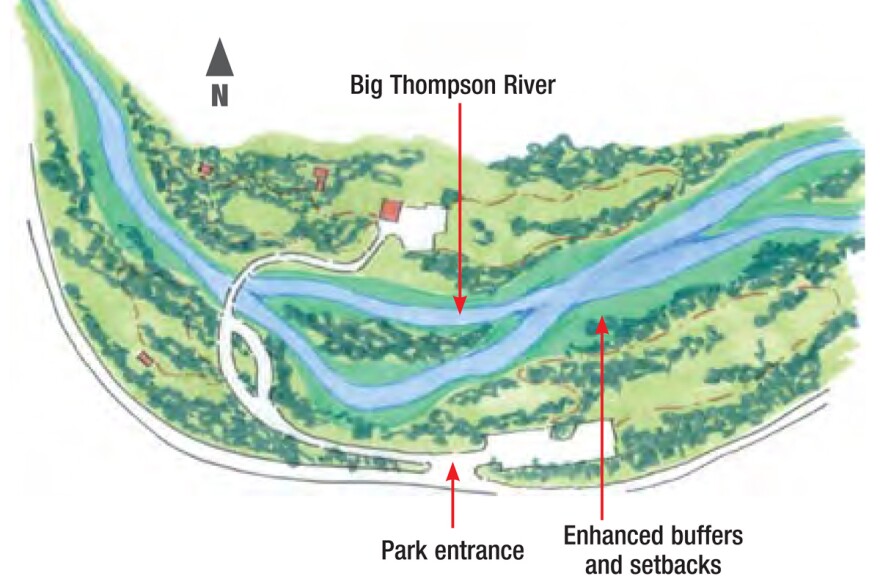Using a report by the Urban Land Institute as a guide, Loveland officials continue to restore areas hard hit by 2013's historic flooding. For every lesson learned as floodwaters subsided, additional questions have arisen about how to best respond to the next big event.
Tom Hacker, spokesman for the city of Loveland, said the report from the Washington D.C. based think tank focused on deeper issues than just first response. Some of the questions raised are how to address housing needs, flood control on the Big Thompson, and the future of Highway 34.
"Some of their recommendations reflect a thinking that this region really needs to come together; that communities within Northern Colorado need to work collaboratively on solutions," said Hacker. "Not just disaster mitigation issues like preparing for floods or fires, but also economic issues that are crucial in making the region more resilient in the face of those."

The $125,000 study [.pdf] was completed at the request of Loveland, Fort Collins and Estes Park and found the low stock of affordable housing makes it difficult for first responders who work in Estes Park to live there. Right now, they live in more affordable Loveland. Brenden McEneaney of the Urban Land Institute said that's troubling.
"Now you have a situation where emergency service workers and general support staff for the community, if they can't afford to live there, than that inevitably makes the community less resilient because when you have a limited access to a place and those workers can't get there, then you have a much more dire situation for a place like Estes Park," McEneaney said.
The report [.pdf] lays out how the Northern Colorado communities can conduct assessments on housing needs, especially for their essential workers as well as young families, mid-level employees and seasonal and short-term workers.
The study also focused on allowing the Big Thompson River to simply be a river, a new approach to flood control design. That's something echoed by Chris Carlson, stormwater engineer for the City of Loveland and member of the all-volunteer Big Thompson River Restoration Coalition.
"The typical approach to a flood is that you have to build it harder, stronger, straighten the river, build levies, protect the river from getting out of its banks," Carlson said. "But sooner or later you get a storm that's big enough to topple all of that. Hurricane Katrina in New Orleans, and what we see here."
For Carlson, when you rebuild and allow the river space to expand and change, there are not only environmental benefits but social and economic pluses as well.

The ULI report recommends Carlson's group, the Big Thompson River Restoration Coalition, become a stable nonprofit with a dedicated staff , and its oversight expanded to include the entire Big Thompson Watershed - not just the corridor between Loveland and Estes Park.
"That's everything up to the Continental Divide, from the National Park lands through the Estes Valley all the way through here the North Fork, the Little Thompson, the Buckhorn Creek so it's a pretty big deal," Carlson said.
But questions still remain – especially around completing the permanent repairs of Highway 34 in the Big Thompson Canyon. Brenden McEneaney of the Urban Land Institute said this is not a new issue for the roadway, which was also heavily damaged by flooding in 1976.
"Do we spend more money to have a large project to say move a road or fortify a road? In some cases the conversations we had with some of the decision makers was, maybe we'll have to accept that we'll have to rebuild this road every certain number of years," McEneaney said.
Regardless of the final decision, Loveland spokesman Tom Hacker said the ULI report won't just sit on a shelf now that it's completed. Some of the recommendations are already being implemented along Loveland's Big Thompson corridor – including innovative restoration plans for the well-known, but heavily damaged Viestenz-Smith Mountain Park inside the canyon.







